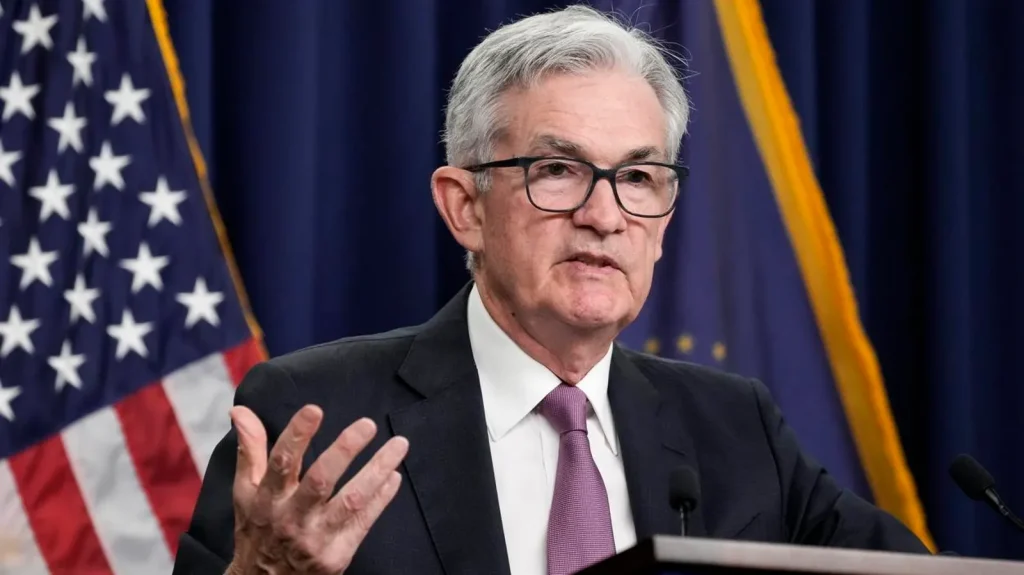The minutes from the Federal Reserve’s latest meeting indicate that officials are hesitant to reduce interest rates until they observe more evidence of inflation trending lower. Despite not anticipating an increase in rates during this economic cycle, policymakers are also not prepared to implement rate cuts at this time.
Following the publication of the minutes on Wednesday at 2 p.m. ET, stock indexes experienced a dip, with the S&P 500 down by 0.5%. Conversely, bond yields saw a slight increase, with the two-year U.S. Treasury note yield rising by 0.04 percentage point to 4.66%.
The minutes reflect discussions from the Federal Open Market Committee meeting held on January 30-31. Despite the acknowledgment of higher-than-expected inflation data for January, which contrasted with a trend of deceleration throughout most of the previous year, officials maintain that the policy rate is likely at its peak for this tightening cycle. They expressed a reluctance to consider reducing the target range for the federal funds rate until they have greater confidence in sustainable movement towards the 2 percent inflation target.
Furthermore, Fed officials have begun contemplating the possibility of slowing down the pace of reductions to the central bank’s holdings of Treasury debt and mortgage-backed securities. Currently, the Fed is reducing its balance sheet by $60 billion per month for Treasuries and $35 billion for mortgage-backed securities.
The minutes reveal that many participants advocated for in-depth discussions on balance sheet issues at the Committee’s next meeting to guide a potential decision to slow the pace of runoff. However, any potential slowdown in the Fed’s balance sheet runoff will not be directly linked to a decision on interest rate decreases. Some officials indicated that tapering could continue even after the Federal Open Market Committee (FOMC) begins to reduce its fed-funds rate target.
This sentiment aligns with the message conveyed by Fed Chair Jerome Powell at his post-meeting press conference on January 31, emphasizing that the next move in interest rates will be downward, contingent on stronger evidence of sustained inflation decline.
Paul Mielczarski, head of macro strategy at investment manager Brandywine Global, interprets the minutes as indicating that rate cuts are still on the horizon, albeit delayed until later this year. He underscores that the case for easing rates remains robust, emphasizing that the economy doesn’t necessarily need to be weak for the Fed to implement rate cuts. Rather, the Fed simply requires sufficient evidence of inflation moving towards the 2% annual target.
The release of consumer inflation data for January on February 13 didn’t align with expectations, underscoring the prudence of the Federal Reserve’s cautious approach. The core consumer price index, excluding volatile food and energy prices, surged by a higher-than-expected 0.4% last month, bringing the 12-month gain to 3.9%, matching the December change. Similarly, January producer inflation data exceeded expectations.
Traders have significantly reduced their bets on near-term rate cuts since the beginning of 2024. Interest-rate futures pricing now suggests that the first rate cut is more likely to occur in June rather than March.
Fed officials exhibit a bias towards a wait-and-see approach regarding interest rate reductions. The resilience of the U.S. economy and the persistent nature of inflation have led many professional forecasters to reassess their predictions in recent years, prompting policymakers to refrain from hasty conclusions.
According to the minutes, most participants acknowledged the risks associated with prematurely easing the policy stance and emphasized the importance of meticulously evaluating incoming data to determine if inflation is genuinely trending towards the 2 percent target.
The next Federal Open Market Committee (FOMC) meeting is scheduled for March 19-20, coinciding with the release of February labor market and inflation data. In January, officials observed a robust labor market but noted signs of easing tightness, including a decline in the ratio of job openings to unemployed workers. While they anticipated further deceleration in inflation, they also acknowledged upside risks and the uncertain path ahead.
